
question specific learning
Transforming Knowledge Into Understanding
Discover the Free Advanced Amateur Radio Course from Hamshack.ca, optimized for mobile learning and utilizing the proprietary QSL (Question Specific Learning) method. This cutting-edge course is specifically designed for licensed amateurs aiming to upgrade from Basic or Basic with Honours certification, offering a unique learning experience that delves into the ‘why’ behind each answer, promoting quicker comprehension and longer retention of knowledge. The course is mobile-friendly and includes visual aids, comprehensive quizzes, and exams to ensure a thorough understanding of advanced amateur radio concepts. With free unlimited access for hamshack.ca account holders, it’s the perfect opportunity for learners to enhance their advanced amateur radio knowledge. Join the community of learners who are finding the course transformative in demystifying complex technical concepts. Enroll today and take the first step towards acing your Advanced Amateur Radio exam. Ham radio clubs are welcome to incorporate the QSL Advanced course into their educational programs for a nominal per user fee, offering a cost-effective solution to enhance training for their members. Contact VE7DXE to get started today.
Log into your hamshack.ca account to access the QSL Advanced Course. Don’t have an account? No problem, request an account here. Good luck with your studies!
How it Works
- Sign-up for the Course
- Study the QSL Course Content
- Take the QSL Practice Exam
- Find an Examiner
- Write the Advanced Exam
- Pass the Exam and Have Fun!
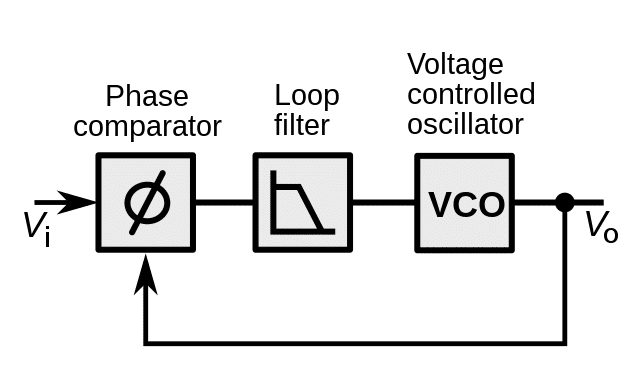
5.1. oscillator circuits, phase-locked loop (PLL)s
The ‘5.1 Oscillator Circuits and Phase-Locked Loops (PLLs)‘ course kicks off the Transmitters, Neutralisation section at Hamshack.ca, focusing on the Question Specific Learning (QSL) approach to make the concepts more accessible. This chapter introduces you to the crucial world of oscillator circuits and PLLs, which are key for creating and controlling frequencies in electronics, like in radios and signal processors. We start with different oscillator designs – Hartley, Colpitts, and Pierce – showing how each one uses feedback in its own way to keep the signal going. For example, Hartley uses a special coil setup, while Colpitts and Pierce rely on different capacitor methods. Then, we talk about why keeping these oscillators stable is so important, especially for devices that need to change frequencies smoothly or use PLLs to keep their signals locked in tight. This intro is perfect for anyone getting into electronic design or looking to understand more about how communication gear works at a fundamental level.

5.2. RF power amplifiers
The ‘5.2 RF Power Amplifiers‘ course is the second installment in the Transmitters, Neutralisation section at Hamshack.ca, simplified through the Question Specific Learning (QSL) method. This chapter takes you through the nuts and bolts of RF power amplifiers, which are essential for beefing up signal strength in radio communications. It kicks off with a look at the adjustable PI network in power amps, explaining how tweaking output controls helps get the most power out to the antenna, crucial for sending strong, clear signals. The discussion then moves to the nitty-gritty of amplifier design, like how certain connections prevent issues like unwanted noise and how choosing the right capacitors and chokes can keep things running smoothly. There’s also a dive into grounded grid amplifiers, showing how they’re set up for the best performance, especially when using old-school triode vacuum tubes. If you’re getting into RF communication, this chapter is a goldmine of info on making amplifiers work their best for top-notch signal sending and receiving.
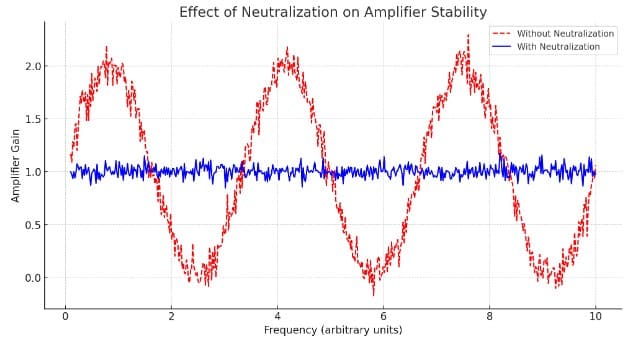
5.3. transmitters, neutralisations
The ‘5.3 Transmitters and Neutralization‘ course, part of the Transmitters, Neutralisation section at Hamshack.ca, simplifies the complex topics of transmitters and the vital technique of neutralization in RF amplifiers using the Question Specific Learning (QSL) method. This chapter starts with the basics of a 2-stage CW transmitter, examining the role of RF transformers and chokes in crafting the signal. It then unpacks the nuances of power amplifiers within these systems, emphasizing how they enhance signal strength and maintain stability. Special focus is given to neutralization, a key strategy to prevent unwanted oscillations and ensure smooth amplifier operation at high frequencies. This exploration is crucial for anyone diving into RF communication or transmitter design, offering clear insights into achieving optimal transmitter performance and signal fidelity.
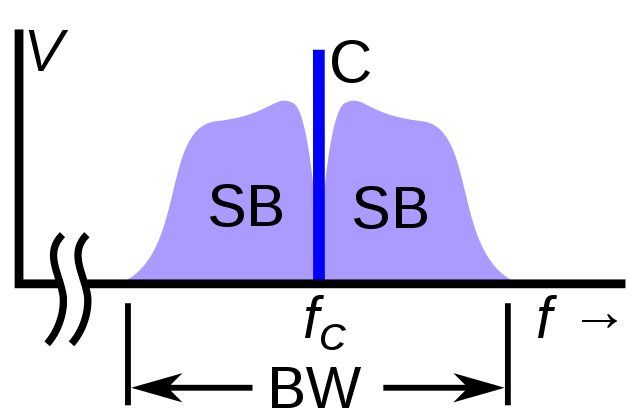
5.4. AM, single sideband, linearity, two-tone tests
The ‘5.4 AM, Single Sideband, Linearity, Two-Tone Tests‘ course in the Transmitters, Neutralisation section at Hamshack.ca, simplified with the Question Specific Learning (QSL) approach, combines essential radio transmission concepts into an accessible format. This chapter explores Amplitude Modulation (AM) and Single Sideband (SSB) techniques, detailing their use in radio communication, the criticality of linearity for clear transmissions, and the application of two-tone tests to evaluate equipment performance. It breaks down the differences between AM and SSB, why linearity matters for preventing signal distortion, and how two-tone tests serve as a practical tool for ensuring equipment delivers quality output. Tailored for anyone keen on mastering radio transmission quality, this course demystifies complex topics, making them easier to understand and apply in real-world scenarios.
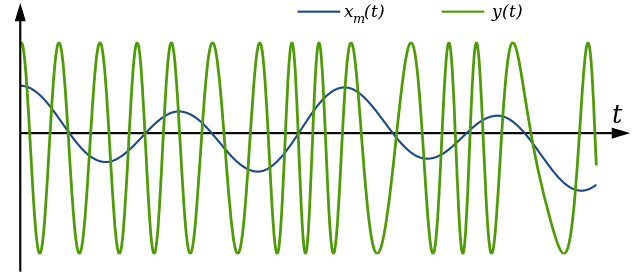
5.5. FM deviation, modulation index, deviation ratio, deviation meters
The ‘5.5 Exploring the Depths of FM Transmission‘ course, a crucial segment of the Transmitters, Neutralisation section at Hamshack.ca, utilizes the Question Specific Learning (QSL) method to demystify the intricacies of FM transmission. This chapter covers essential concepts like the modulation index, which measures the frequency change relative to the modulating signal, affecting the FM signal’s bandwidth and clarity. It introduces the deviation ratio, key to defining the limit of modulation for consistent FM broadcast, and the use of deviation meters for accurate frequency deviation checks, critical for upholding transmission quality. By offering a deep dive into the mechanics of FM transmission, from foundational principles to the tools for signal optimization, this course equips enthusiasts with a thorough understanding of FM broadcasting’s technical aspects, highlighting its significance in contemporary communication networks.

5.6. FM transmitter, repeater circuits
The ‘5.6 FM Transmitter and Repeater Circuits‘ course, within the Transmitters, Neutralisation section at Hamshack.ca, breaks down the complexities of FM transmission systems using the Question Specific Learning (QSL) approach. This chapter sheds light on the inner workings and design challenges of FM transmitters and repeaters, starting with the issue of intermodulation interference—a scenario where signals mix to produce unwanted frequencies. It discusses strategies to counteract such interference, crucial for the smooth functioning of repeater stations. Delving into FM transmitter designs, the course highlights the role of phase modulators, audio shaping networks, and the importance of filtering and isolation in repeaters to avoid signal crosstalk. By unpacking these technical details, this course offers a deep dive into the engineering behind FM communication, providing essential knowledge for anyone involved in radio broadcasting or communication system design.
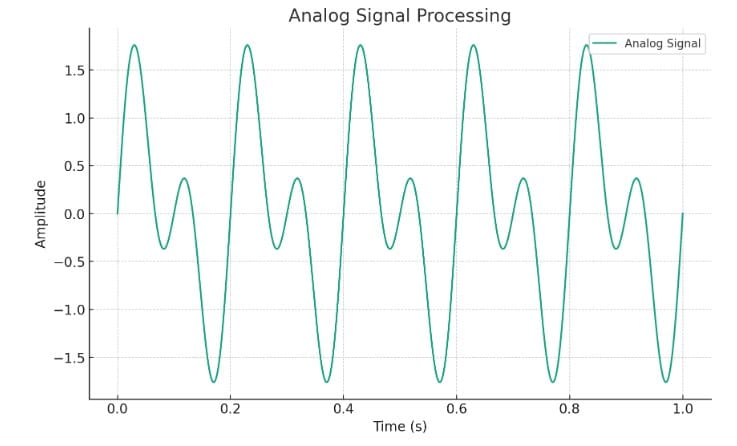
5.7. signal processing – AF, IF, and RFs
The ‘5.7 Exploring the Frequencies: A Journey into AF, IF, and RF‘ course, part of the Transmitters, Neutralisation section at Hamshack.ca, simplifies the complexities of Audio Frequency (AF), Intermediate Frequency (IF), and Radio Frequency (RF) for learners using the Question Specific Learning (QSL) approach. This chapter dives deep into how these frequencies are harnessed and fine-tuned in ham radio operations, going beyond basics to explore the core processes that ensure successful signal transmission and reception. From examining the role of Automatic Level Control in Single Sideband (SSB) transmitters to unraveling the nuances of digital signal processing, this course lays a thorough groundwork for grasping the diverse aspects of radio communication, offering insights into the sophisticated techniques used to manage frequencies in the world of amateur radio.

5.8. codes and protocols, Baudot, ASCII, parity, CRC, X.25, ISO layers
The ‘5.8 Codes and Protocols: Baudot, ASCII, Parity, CRC, X.25, ISO Layers‘ course, a part of the Transmitters, Neutralisation series at Hamshack.ca, adopts the Question Specific Learning (QSL) technique to simplify the world of digital communication for amateur radio enthusiasts. This chapter takes you on a journey through the key digital codes and protocols that are the backbone of modern ham radio communication. From the early Baudot code to the universal ASCII, it covers how data is encoded for transmission. It also delves into error-checking mechanisms like parity bits and Cyclic Redundancy Check (CRC), crucial for ensuring data integrity. Furthermore, the chapter explores the X.25 protocol and the structured layers of the OSI model, essential concepts for understanding complex digital communication networks. Aimed at demystifying the digital aspects of ham radio, this course provides the tools needed to engage effectively in digital modes of communication, enhancing both knowledge and operational skills in the digital domain of amateur radio.
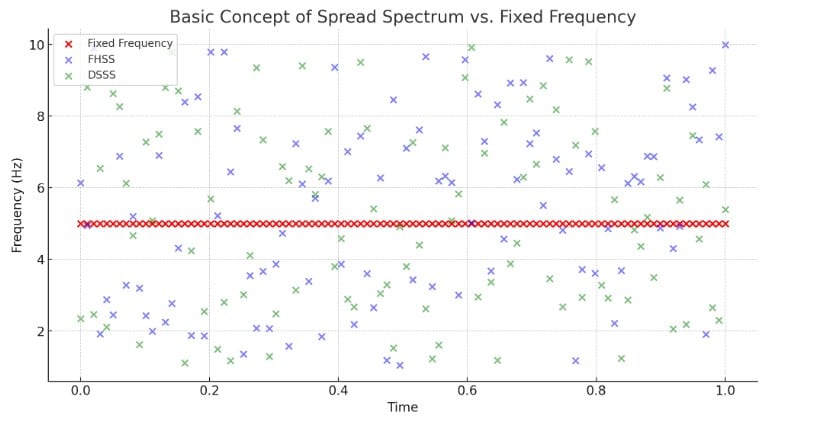
5.9. spread spectrum – frequency hopping, direct sequences
The ‘5.9 Spread Spectrum – Frequency Hopping, Direct Sequences‘ course marks the conclusion of the Transmitters, Neutralisation section at Hamshack.ca. Employing the Question Specific Learning (QSL) method, this final chapter, “The Dynamics of Elusive Communications,” simplifies the advanced topic of spread spectrum technologies for amateur radio practitioners. It elucidates the principles behind frequency hopping and direct sequence spread spectrum techniques, showcasing how they disperse a signal across a wide frequency range to improve resistance against interference and eavesdropping. Tailored for ham radio enthusiasts navigating crowded signal spaces or requiring secure, robust communication channels, this course demystifies spread spectrum’s complex workings. It highlights its significance and utility in ham radio, providing valuable knowledge for those aiming to advance their communication strategies in the increasingly complex and crowded wireless spectrum, effectively wrapping up the series with a deep dive into modern communication resilience.
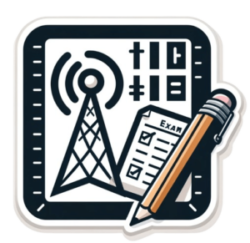
Transmitters, Neutralisations Exam
Dive into the complexities of transmitters and neutralization with the 8.1.5 exam, designed for advanced amateur radio operators. This exam covers a wide range of topics from RF power amplifiers and transmitter neutralization techniques to the specifics of AM and single sideband modulation, including linearity and two-tone tests. It also explores FM deviation, modulation indexes, repeater circuits, signal processing across audio, intermediate, and radio frequencies, as well as essential communication codes and protocols. Whether you’re looking to deepen your technical understanding or preparing for advanced certification, this exam is your gateway to mastering advanced radio transmission technologies.
Hamshack.ca is transforming Amateur Radio education through its proprietary Question Specific Learning (QSL) method, used to deliver the Advanced Amateur Radio course, with the Basic and other courses to follow. This approach emphasizes understanding the reasoning behind correct answers with detailed explanations, real-life examples, and quizzes developed from the Spectrum Management Question bank. QSL aims to shift learning from simple memorization to thorough comprehension, preparing learners for practical application and the Spectrum Management formal written exams.
© The Question Specific Learning (QSL) method is a proprietary and copyrighted educational framework, exclusively developed by Hamshack.ca. For detailed information on usage rights and restrictions, please refer to the Hamshack.ca Terms of Use.


